Also known as a liver function test (LFT) or a liver panel test, a liver blood test is used to diagnose and monitor liver disease. These blood tests are done by measuring levels of certain liver enzymes and proteins in a blood sample.
A liver function test can be done to detect all sorts of liver diseases and issues, including abnormal liver chemistries, chronic liver disease, liver damage, alcoholic liver disease, and other liver problems. For example, a test may be done to assess liver function – whether the liver is producing the right total protein and clearing serum bilirubin properly.
Purpose of Liver Function Tests
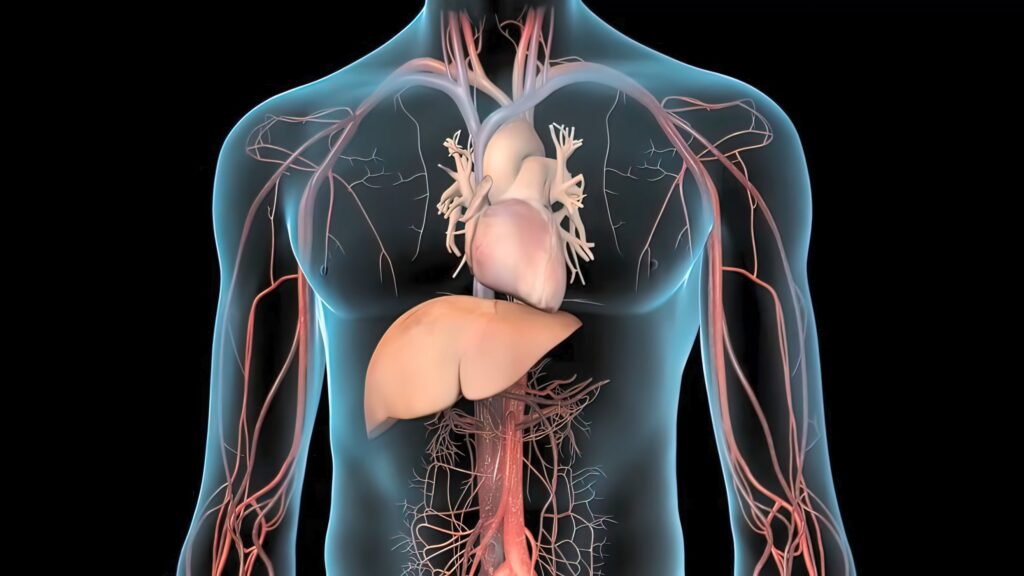
Liver function tests can be used for a variety of reasons, including;
- Screening for liver infections including hepatitis
- Monitor and diagnose liver disease, such as viral or alcoholic hepatitis
- Measuring the severity of liver disease, such as cirrhosis, so that it doesn’t progress to primary biliary cirrhosis, for example
- Monitor side effects of prescribed or over-the-counter medications
Do I need a Liver Function Test?
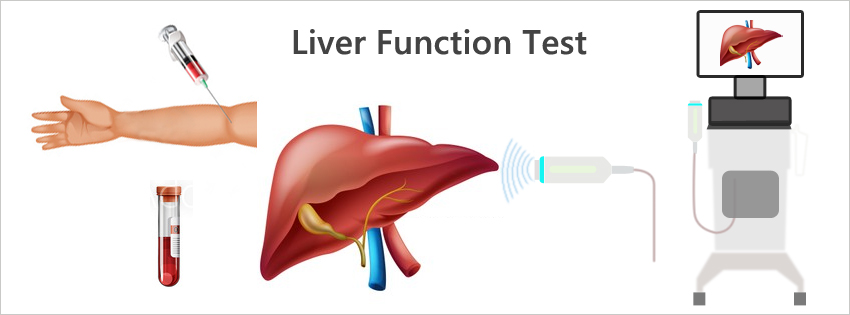
For those experiencing symptoms of liver disease, a liver test measures severity. These symptoms may include:

- Jaundice – yellowing of the skin & eyes
- Diarrhea
- Abdominal pain
- Nausea & Vomiting
- Fatigue
- Dark-colored urine/light-colored stool
Liver function test results are important as well if you have certain risk factors, which can include:
- A family history of liver disease, congestive heart failure, or diabetes mellitus
- Alcohol use disorder
- Exposure to viral hepatitis
- Taking medicine that may cause liver damage
What happens during a Liver Function Test?
Liver function tests are short and painless. You’ll get your blood drawn by a health care professional and that blood sample will be used in laboratory tests and lab analysis. Booking lab tests online for blood tests and other liver function tests is seamless and only requires you to find a reputable clinic.
When to Take a Liver Blood Test

Liver health is important in the production of bile and certain proteins that are crucial to the body, so it’s important to make sure you have a healthy liver. There are many reasons why someone needs to undergo liver function testing.
Consider your medical history, whether you mix medications and of course, whether you have noticeable symptoms of liver damage or a diseased liver.
Through blood tests, a physical examination, and imaging tests, a healthcare professional can help detect signs of a liver disorder or liver problems in its early stages.
Liver Disease Symptoms
Getting early treatment and diagnosis for liver disease is important to stop it from progressing into more serious issues. Left untreated, it could develop into chronic liver disease or hepatic encephalopathy, for example.
Early Symptoms of Liver Disease
While early-stage liver disease might not display any noticeable signs, people might experience symptoms such as:

- Abdominal discomfort or pain
- Swelling in the abdomen, legs, and ankles
- Jaundice – yellowing of the eyes & skin
- Pale stool color/dark urine color
- Chronic fatigue
- Loss of appetite
- Itchy skin
If you have any of these persistent signs that may be worrying you, this might indicate the need for a liver blood test.
End Stage Liver Disease Symptoms
There are a variety of types of end stage liver disease that present different complications. In most cases, severe liver disease will require a liver transplant.
Chronic liver failure is when the liver loses its ability to function properly. Liver failure and decompensated cirrhosis are different, however, where liver failure is the liver shutting down and cirrhosis is late-stage scarring where the liver may or may not still be able to function properly.
Nonalcoholic fatty liver disease occurs through conditions like obesity, high blood pressure, and high cholesterol.
For end-stage hepatitis C, the liver is severely damaged by chronic hepatitis over several years.
There are also inherited liver diseases that are passed from parent to child that can cause cirrhosis.
Overall, common symptoms of liver disease in the more advanced stages include:
- Fluid buildup in the belly
- Vomiting blood
- Toxic substances built up in the blood that can affect brain function
- Easy bruising or internal bleeding
- Loss of appetite
- Kidney failure
- Jaundice
- Gallstones
- Shivering attacks
- Losing weight
When it comes to end-stage liver disease, lifestyle changes, over-the-counter medications, and herbal supplements aren’t enough. Your healthcare provider may suggest liver transplantation.
Are There Differences in Liver Disease Symptoms in Females and Males?

Research shows that there are differences between females and males when it comes to liver disease symptoms.
Autoimmune Liver Diseases
Autoimmune diseases such as autoimmune hepatitis and primary biliary cholangitis are more likely to be diagnosed in women than in men. These liver diseases involve the body’s immune system attacking healthy liver tissue and liver cells.
Liver Tumors
Overall, benign tumors are more common in women, and malignant tumors are more common in men.
Toxin and alcohol-related liver disease
Alcohol affects women and men differently due to numerous factors. Women sustain a higher proportional level of alcohol in the blood and produce a smaller amount of alcohol dehydrogenase. This enzyme helps to break down alcohol in the blood, which makes them more susceptible to alcohol damage.
Alcohol-Related Symptoms

Alcohol-related liver disease involves damage to liver function due to alcohol abuse. This will occur in stages, starting with liver fibrosis, where there is scar tissue build-up on the liver, and ending with liver cirrhosis – an irreversible condition that will require a healthcare provider to inject drugs, a liver transplant, and lifestyle changes.
Symptoms relating to alcohol related liver disease include:
- Portal hypertension – pressure in the portal vein that slows blood flow
- Increased tendency to bruise and bleed
- Vomiting blood and tarry stools
- Build-up toxins in the brain that causes confusion, insomnia, and personality changes
- Muscle wasting
- Abdominal pain
- Swelling in the legs, ankles, feet, and abdomen from fluid build-up
Non-Alcohol Related Symptoms
For those with non-alcohol related liver disease such as fatty liver disease (a build-up of excess fat in the liver), signs or symptoms can be similar to other types of liver disease, but may also include:
- Severe Fatigue
- Weight Loss
- Long-lasting itching
- Spiderlike blood vessels
Common Types of Liver Function Test
Each blood sample from a liver function test is made to determine whether the levels of specific proteins and enzymes in your blood are in normal range. If it’s found that you have elevated levels or lower than normal values, this might indicate issues with liver function.
What blood tests check liver function?
To ensure proper liver function, there are a few common liver function tests that are done to check that the liver is functioning properly, diagnose liver diseases, test for liver infections, and screen for any other liver problems or abnormal liver chemistries. Keep in mind that not all serum biomarkers in the liver function test may provide an accurate diagnostic result, and may indicate other disease conditions unrelated to the liver.

When red blood cells are naturally going through normal breakdown, bilirubin is excreted. It then passes through the liver and is excreted. Increased levels of bilirubin can indicate anemia, liver disease, or liver damage.
Albumin is a protein made in the liver that helps your body fight infection and perform other functions. If your total protein or albumin levels are low, this may mean liver disease or liver damage.
Prothrombin time is a term that refers to the time it takes for blood clotting to occur through coagulation factors. Increased time may signify liver damage. To test for prothrombin time, an international normalized ratio (INR) test must be carried out.
Liver Enzymes
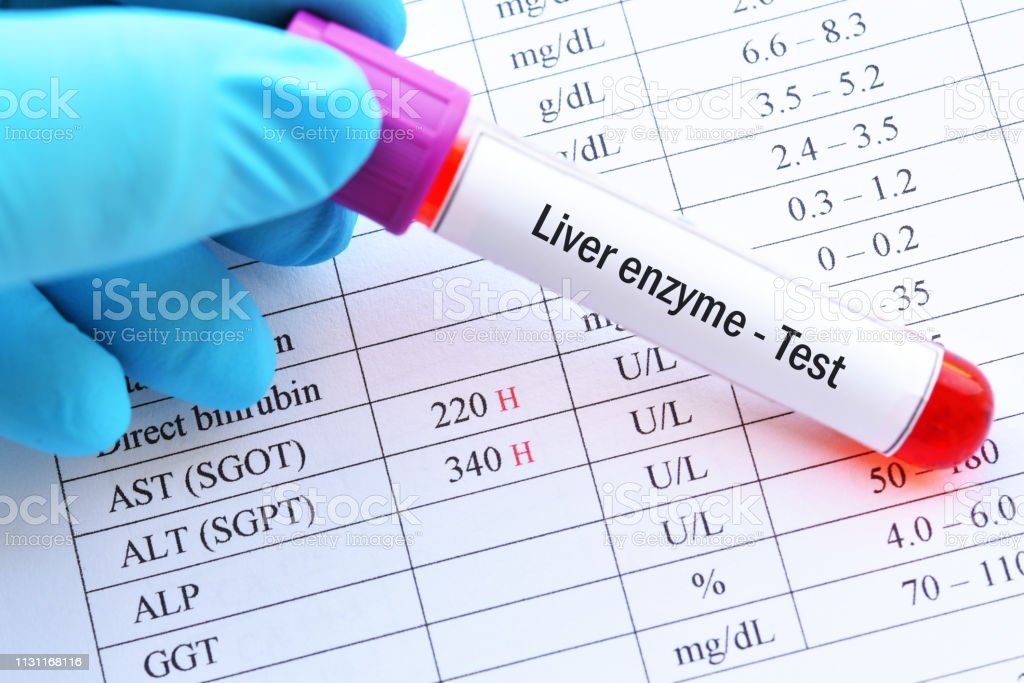
Alkaline phosphatase is found in the liver and bone and acts to break down proteins. Elevated levels could indicate bone disease, liver injury, or muscle damage.
Found in the liver, alanine transaminase helps convert proteins into energy for liver cells. If there is liver damage, however, ALT is released into the bloodstream, leading to elevated levels.
Aspartate transaminase is an enzyme found in the liver that serves to metabolize amino acids. Similarly to ALT, increased AST levels will often mean liver damage, liver disease, or skeletal muscle damage.
Found in the blood, increased GGT levels can mean bile duct damage or bile duct obstruction. It is also commonly called a gamma-glutamyl transferase test.
LD is found in the liver. While higher levels can mean liver damage, it can also indicate another disorder.
5′-nucleotidase is a protein produced by the liver, where greater than normal values may indicate blocked bile ducts from the liver, lack of blood flow to the liver, liver cancer, chronic liver disease, and more.
Other Diagnostic Tests
There are also other types of blood tests for liver function diagnostics that can be more suitable for screening certain diseases or issues.
An AFP tumor marker test is a blood test that measures the levels of alpha-fetoprotein in your blood sample. The phrase “tumor marker” refers to substances produced by cells (cancerous or not) in response to cancer. If test results are high, it may signify liver cancer or ovarian or testicular cancer. However, this test should be done alongside other tests and exams to diagnose and monitor cancer.
Mitochondria are responsible for creating energy for the cells in your body, so when there are elevated levels of AMAs, it can mean that the immune system is attacking the body as if it were an infection. This blood test is typically used to detect primary biliary cirrhosis (now called primary biliary cholangitis).
The serum AAT test measures the amount of this protein in the blood. Its main purpose is to protect your lungs from disease. Unlike other proteins we’ve discussed, AAT is made by certain genes in the body. If there are mutations present, it could put you at risk for disease. This test is suitable for those with a family history of AAT deficiency, to diagnose a rare form of liver disease in infants, and to diagnose AAT deficiency in those who develop lung disease early and have no other risk factors.
Brands of Liver Blood Tests
LIVERFASt™ is a blood test that combines algorithm technology and 10 biomarkers including GGT, ALT, AST, total bilirubin, and more. It is used to measure steatosis, fibrosis, and activity of the liver in a non-invasive way. This is a sound early disease intervention liver test to use for diagnostics.
NIS4 is another blood-based biomarker test made to measure NASH risk in patients with one or more metabolic risk factors. As NASH is highly underdiagnosed, this test can assess NASH activity and the fibrosis stage.
The Enhanced Liver Fibrosis test is a simple blood test that helps to assess the risk of NAFLD progression and liver-related issues. This non-invasive blood test measures the three direct fibrosis markers including hyaluronic acid (HA), pro collagen III amino-terminal peptide (PIIINP), and tissue inhibitor of matrix metalloproteinase 1 (TIMP-1). Along with other lab tests and findings, it can also assess risk of cirrhosis progression in those with chronic liver disease.
What Do Liver Blood Tests Look For?
Many specific blood tests can often help to diagnose whether the liver is inflamed, damaged, or functioning properly. Liver blood tests indicate abnormalities within the liver, such as inflammation, acute liver cell damage, or other conditions which help to detect and monitor liver disease.
These blood tests assess the levels of specific enzymes and certain blood proteins, and the levels above or below normal may indicate liver diseases.
However, abnormal liver function test results might not always indicate liver problems, so you should always consult your doctor to understand your test results.
Some of the reasons liver function tests might be conducted are screening for conditions such as hepatitis, monitoring the side effects of medications, and studying the seriousness of the liver disease.
Hepatitis screening includes testing to detect the disease before a person experiences symptoms. Keep on reading for more details on situations that require a liver function test:
Screening for liver infections, such as hepatitis screening
Liver function tests help detect acute and chronic liver diseases, as well as hepatitis (liver inflammation or infection) and cholestasis (formation disorder or obstruction of bile flow).
What is tested in liver in a blood test?
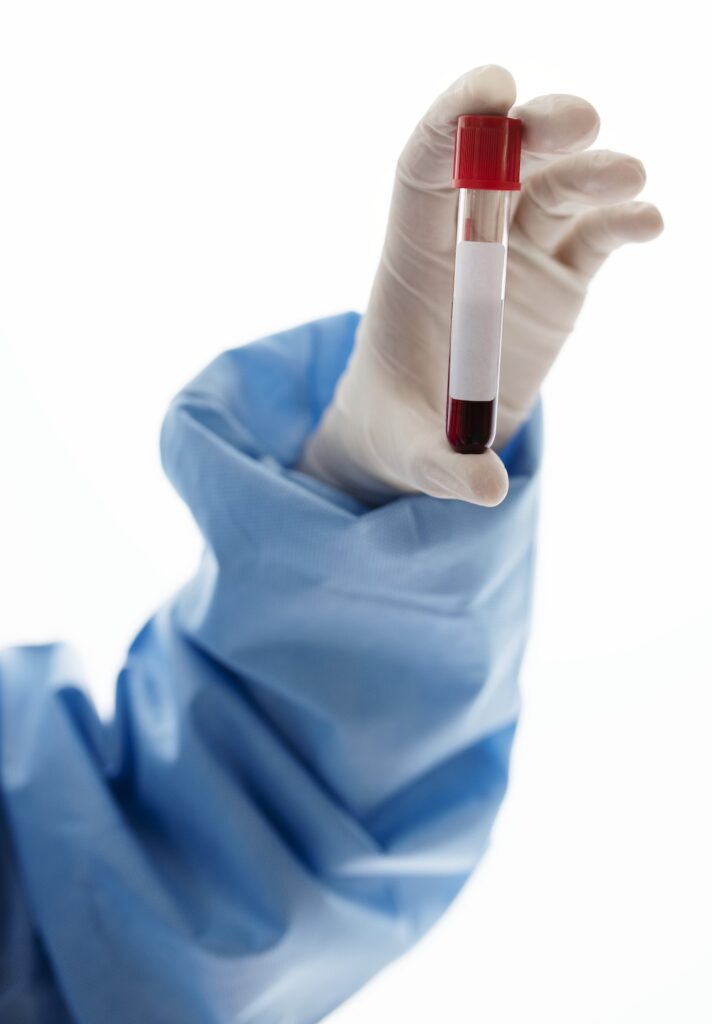
Liver function tests measure various substances produced by the liver, including proteins, enzymes, and bilirubin. Liver enzymes include alkaline phosphatase (ALP), alanine transaminase (ALT), aspartate aminotransferase (AST), and gamma-glutamyltransferase (GGT), the levels of which increase with liver damage. In addition, the liver produces protein, and having low protein levels may indicate that the liver is not functioning optimally. Bilirubin is a waste product that the liver deposits in bile.
Screening for hepatitis involves analyzing a blood sample for antibodies and antigens. Your healthcare provider may offer a hepatitis B screening test or a hepatitis C screening test to detect them in the early stages before the appearance of symptoms.
Types of hepatitis
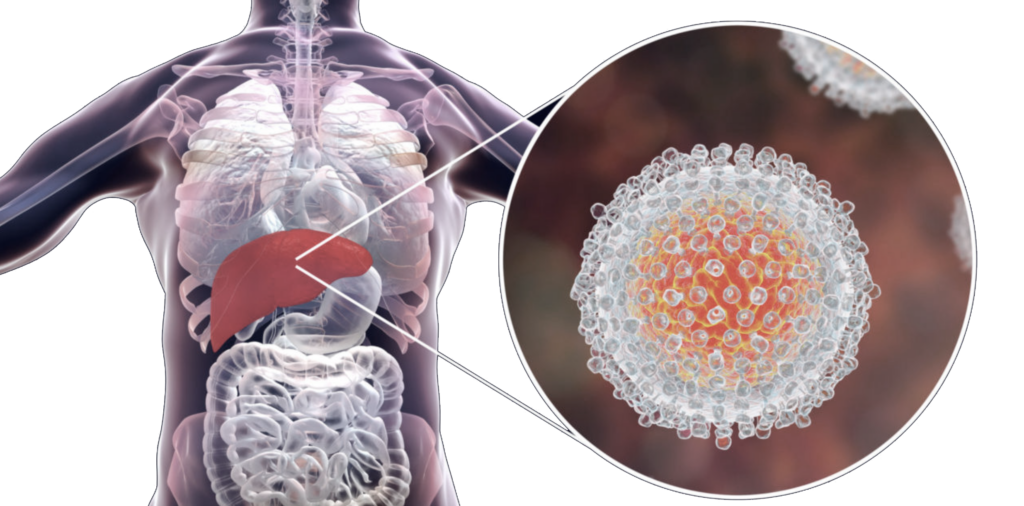
are a heterogeneous group of five non-related hepatotropic viruses, including hepatitis A, B, C, D, and E. Occasionally, the infection develops into chronic hepatitis when the liver inflammation persists for longer than six months. Liver function tests help monitor the progression of these diseases.
Hepatitis A is a viral liver infection caused by the hepatitis A virus (HAV). Patients typically recover without any treatment in a few weeks. This type of hepatitis is not widely spread in the United States, thanks to the vaccine. For hepatitis A screening, your doctor will conduct a physical exam and take a blood test, possibly for viral hepatitis.
Hepatitis B is infected through the hepatitis B virus. It is transmitted during contact with the blood, semen, or other body fluids of an infected person. For chronic hepatitis B, no symptoms may appear until complications arise, which can take years after you are infected. That is why hepatitis B screening is essential, even if no symptoms are present.
Hepatitis C is caused by the hepatitis C virus (HCV). It can vary from a minor infection taking a few weeks to a severe, lifetime illness. Hepatitis C screening is necessary even without symptoms, as you might have no symptoms for decades before complications develop.
Monitoring the progression of liver disease, such as viral or alcoholic hepatitis, and assessing the effectiveness of treatment
Chronic hepatitis may develop into fibrosis (when liver cells get inflamed, making more fibrous scar-like tissue) and, ultimately, into liver cirrhosis (when the liver is so damaged with scar tissue that it gradually loses its function) or liver cancer.
Alcoholic hepatitis usually progresses to cirrhosis if the patient continues to drink alcohol. In patients who stop drinking, hepatitis normalizes after a few months, but the cirrhosis, once developed, persists.
Hepatitis testing will help assess liver functioning and identify the most effective treatment for the disease. Testing can also help determine hepatitis complications and evaluate a patient’s response to treatment. Before starting the treatment, patients should be assessed for possible drug-drug interactions between the medications they are taking at the moment and prescribed antivirals to avoid complications.
Measuring the severity of disease, specifically liver scarring (cirrhosis, primary biliary cirrhosis)
Hepatitis can damage the liver, impact its function, and eventually result in complications such as cirrhosis and liver cancer. Your doctor may order tests for cirrhosis or a liver biopsy to assess the liver as infected, inflamed, or cancerous. With a liver biopsy, a small sample of liver tissue is safely removed to be examined under a microscope.
A liver biopsy is generally performed if you get abnormal results from other blood tests for cirrhosis of the liver, have a tumor, or persistent inexplicable fever. A biopsy helps with the diagnosis of many liver diseases. This procedure also helps estimate the stage (early, advanced) of liver disease, which is particularly important for hepatitis B and C infection. Your doctor may also order other laboratory tests such as alpha-fetoprotein (AFP) blood tests for liver cancer. If AFP levels are high in someone with a liver tumor, it can indicate the presence of liver cancer.
The liver also generates proteins that help blood clot during bleeding. An injured liver may not produce enough clotting factors, potentially increasing the risk of bleeding. Your doctor may prescribe blood tests to determine this risk.
A liver biopsy is also recommended to evaluate and choose the best treatment for primary biliary cirrhosis, a liver condition that may gradually worsen over time. If left untreated, it can lead to liver failure. Sometimes a liver biopsy is recommended to evaluate the liver and help doctors choose the best treatment. PBC can cause complications such as weakening of the bones (osteoporosis), leading to fractures.
Monitoring possible side effects of medications
Some drugs – even those purchased over the counter or on prescription – can damage your liver. Even some vitamins and plant-based medicines can be risky. Check with your doctor before taking any medication. With certain drugs that can cause liver damage (such as statins), doctors sometimes perform regular blood tests to monitor liver enzyme levels. Such monitoring allows problems to be detected early and can help prevent liver damage.
When Might Doctors Order an LFT?
Even with no symptoms, your healthcare professional may recommend a blood test if you are at a higher risk of having a liver disease for the following reasons:
- Family history of liver disease
- Heavy drinking habits
- Intake of certain medications known to cause liver damage
- Hepatitis or exposure to hepatitis
A doctor might also order LFTs if a patient has the following symptoms:
- Jaundice (yellow skin and eyes)
- Dark urine or light-colored stools
- Weakness or fatigue
- Loss of appetite
- Nausea and vomiting
- Abdominal pain or swelling
- Itching
A medical expert takes a blood sample from a vein in the arm using a thin needle. Your doctor will use the test results for diagnosing your disease or determining the treatment you need.
What Are the Benefits of Liver Blood Tests?

Liver blood tests are invaluable tools for monitoring an individual’s health and tracking the progression of any existing liver conditions. These tests measure levels of proteins, enzymes, and other substances to provide crucial information about a person’s current state of health.
Not only can a liver blood test inform a diagnosis or signal the presence of certain conditions, for example, significant fibrosis, but it can also be used to evaluate the effects of treatment or monitor any potential changes in the body.
Here are some other key benefits that liver blood tests offer:
Non-invasive
Liver blood tests are much less invasive than other procedures, like a liver biopsy or surgery. This means that they can provide reliable results without requiring the use of needles or other instruments. The non-invasive liver test involves serum fibrosis scores and elastography techniques that can be used for various forms of liver disease, including viral hepatitis, non-alcoholic fatty liver disease (NAFLD) alcoholic liver disease, autoimmune hepatitis, and cholestatic liver disease. Non-invasive test (NITs) offer an easy way to assess the severity of these diseases without needing invasive procedures or putting the patient at risk.
For instance, serum scores for nonalcoholic fatty liver disease can be easily measured with a basic blood test and analyzed via online tools such as MDCalc. On the other hand, elastography is a quick and non-invasive diagnostic procedure to measure the degree of fibrosis in the liver parenchyma, as well as test for liver stiffness. The process entails sending an acoustic wave through it, then measuring the speed at which it travels – all within several minutes! Using any example of this non-invasive liver test can provide invaluable information about the progression of a disease and help doctors determine the best course of treatment for each patient.
Accurate results
A liver blood test is considered an accurate method for monitoring liver health due to its ability to accurately measure certain substances in the blood that are indicative of disease. For example, a liver blood test can measure alanine aminotransferase (ALT) and aspartate aminotransferase (AST), both enzymes that are typically found in the liver. Elevated levels of ALT or AST indicate damage to the liver, which could be due to several different diseases and conditions.
However, not all serum biomarkers in the LFT may provide an accurate diagnostic result and may lead to other disease conditions not related to the liver. In this case, the doctor will prescribe additional tests like lipid profile testing, and biopsy.
Various non-hepatic causes can lead to elevated levels of ALT and AST, including polymyositis, acute myocardial infarction, acute muscle injury, and hypothyroidism. Clinical studies conducted on various age groups state that the prevalence of fluctuation in the rates of these enzymes is closely related to the patient’s age.
The study concludes that with aging, ALT levels tend to decline, while AST levels remain stable, which leads to higher AAR. Patients that were older in age had higher AARs compared to younger patients, even in the absence of advanced fibrosis.
Identification of the cause of abnormal liver function
A non-invasive liver screen test is often used to identify the cause of abnormal liver function, such as alcohol-related liver disease or a liver disease induced by drug abuse, ischemia, metabolic disorders, infection with hepatitis B or C viruses, and various autoimmune diseases. Following a diagnosis, ongoing monitoring can help monitor the progression of the disease and determine whether treatment is working. Liver blood tests can also be used to monitor any potential side effects that may occur as a result of treatment.
Summarily, liver blood tests offer patients an effective way to monitor their health and track the progression of various conditions. They are easy, non-invasive, and highly accurate in identifying the presence of acute or chronic liver diseases. For anyone dealing with a liver-related condition or those at risk of developing one, a liver blood test can be an essential tool in managing their health and well-being.
Quick results
Another key benefit of a non-invasive liver screen test is its ability to provide quick and accurate results. A typical blood test can be performed in under an hour, and many online tools offer instant analysis once these results are in. This makes it easy for doctors to get the information they need, even if they’re working with a busy patient schedule.
Liver blood tests are also non-invasive, which means that patients don’t need any recovery time after the test is performed. This can make it much easier to get quick results and start treatment right away, improving overall health outcomes.
Best for Early Stage Diagnosis
Another key advantage of the new non-invasive biopsy test for the liver is its ability to provide early warning signs of a potential problem or determine liver disease severity. Liver problems often have very few, if any, noticeable symptoms in the early stages, yet they can be quite serious and even life-threatening if left untreated. A liver blood test can help identify these problems early on, as well as the liver disease severity, so they can be treated as soon as possible.
This is why it’s important to get regular screenings of your liver health, particularly if you are at risk for developing a disease or condition that could damage your liver such as advanced fibrosis. A non-invasive test for liver fibrosis, for example, can not only help protect the health of your liver but also help you catch other health problems early on, improving your overall quality of life.
However, conventional serum-based LFTs don’t give information on either the presence or the stage of progress of liver fibrosis and steatosis activity.
LIVERFASt is the breakthrough alternative to liver biopsy. It’s a non-invasive liver function test that can provide surrogate grading and staging of the three elementary features of NASH: steatosis, inflammatory activity, and fibrosis.
Monitoring responses to treatment
Finally, the new non-invasive biopsy test for the liver can also be used to monitor the response to a disease or condition to treat. The most common in this case is monitoring liver fibrosis progression from acute to enhanced liver fibrosis. Monitoring a fibrosis stage, for example, can help doctors determine the effectiveness of treatment and whether any adjustments need to be made.
These liver blood tests are often carried out to prevent any abnormalities in the liver from deteriorating into chronic liver disease. By regularly testing for markers associated with the disease, it is possible to see how well your treatment is working and adjust your plan as needed based on these results. This can help protect your health and ensure you are getting the best possible care at every step of the way.
Overall, liver blood tests are a valuable tool for monitoring liver health and diagnosing conditions such as patients with chronic hepatitis, alcoholic fatty liver disease, hepatic fibrosis, advanced liver fibrosis, and more. These tests can be non-invasive, accurate, and provide quick results that can be analyzed online. If you’re concerned about the health of your liver or think you may be at risk for a condition that could potentially damage it, speak to your doctor about getting a liver blood test today.
What Are The Limitations/Shortcomings of Liver Blood Tests?
Abnormal LFT values aren’t necessarily an indicator of liver disease
Although abnormal LFT values can help diagnose liver disease, abnormal values aren’t always directly correlated to liver disease. Here are some instances:
- Increased aminotransferase levels can be caused by celiac disease
- Increased AST levels can be caused by myopathy due to muscle injury
- Pagel’s disease can cause increased alkaline phosphatase levels
- Mild elevations in serum bilirubin can be due to Gilbert’s syndrome and even inherited gene mutation
- Pregnant women typically have elevated levels of alkaline phosphatase caused by the fetus’ placenta
“Normal” levels of the liver panel can differentiate from one laboratory to another
This is due to the reference the laboratory uses to determine the “healthy” levels in their patients. These reference results may have included apparently well individuals with unrecognized liver diseases such as alcohol abuse, herbal or medication consumption, undiagnosed viral hepatitis, or fatty liver disease.
Liver function tests don’t always provide reliable results
It’s not uncommon for LFTs to look normal even in patients with severe liver disease and abnormal in patients that suffer from other diseases unrelated to the liver. As mentioned earlier, liver tests don’t always state the type of disease, but they give clues to the doctor so that they know what additional tests to recommend.
Lipid profile tests can give more accurate results while assessing liver dysfunction. Lipids are one of the vital components that control cellular functions and homeostasis. Abnormal cholesterol and triglyceride levels are common in patients with severe liver dysfunction.
What causes elevated liver enzymes?
Elevated liver enzymes are often temporary and related to some form of inflammation or injury that the liver has sustained.
One of the most common causes of elevated liver enzymes is heavy drinking and consumption of alcohol, which can cause damage to the cells in the organ and lead to liver inflammation.
Other common causes include:
Fatty liver disease
The accumulation of fat in the liver is known as fatty liver disease and is another example of what causes elevated liver enzymes. When this collection results from an excessive intake of alcohol, it’s referred to as an alcoholic fatty liver disease. Conversely, when alcohol is not the primary factor, fatty liver accumulation goes by another name: nonalcoholic fatty liver disease (NAFLD).
While feeling fatigued and experiencing pain in the right side of your abdomen may be a sign of fatty liver disease, it’s often asymptomatic. Hence, to diagnose fatty liver disease in someone with alcohol use disorder or metabolic syndrome, a physician may rely on measurements of elevated liver enzymes.
Hepatitis
There are several different types of hepatitis, all of which cause liver inflammation. Hepatitis A is commonly contracted through contaminated food and water, while viruses B and C are typically transmitted through blood or other bodily fluids. While there is no vaccine to prevent hepatitis B and C, shots can be given to lower the risk of contracting hepatitis A.
Hepatitis, especially acute hepatitis, can cause elevated liver enzymes. In some cases, patients may only experience mild symptoms like fever, fatigue, and abdominal pain. However, in severe cases, the condition can lead to severe complications, including acute liver failure or even death.
Metabolic syndrome
Metabolic syndrome is an assemblage of symptoms that can substantially increase your chances of developing heart disease. Symptoms that define metabolic syndrome include high blood pressure, high triglyceride levels, and high fasting glucose levels. People with fatty liver disease are at a higher risk of developing metabolic syndrome, which can cause elevated liver enzymes. Individuals who may have metabolic syndrome should watch out for the following symptoms:
- High blood sugar
- High blood pressure
- High cholesterol
- Obesity
If patients display one or more of these symptoms, the doctor may order a test to check for high levels of liver enzymes.
Danger level of SGPT and SGOT
To assess the condition of your liver, a doctor may ask you to take two blood tests: Serum Glutamic Pyruvic Transaminase (SGPT) and Serum Glutamic-Oxaloacetic Transaminase (SGOT). If these enzyme levels are higher than normal, further testing might be necessary to identify whether you have any underlying liver disease.
SGPT and SGOT levels are usually between 7-56 units per liter in serum, yet there is a caveat; what makes up the “normal range” will vary depending on which laboratory takes the measurement. Thus, it’s important to pay attention to where you have your tests done!
As an SGOT and SGPT level of up to 50 units/liter for men or 45 units/liter for women is considered normal, anything above those numbers can be cause for concern. The high levels are often a sign that the patient has severe underlying issues with their liver, potentially indicating liver damage or liver injury. Therefore, if your results exceed these thresholds, seek medical attention immediately.
Cardiovascular problems can sometimes cause elevated liver enzymes. This occurs due to the strain that cardiovascular issues put on the liver, which is responsible for processing fats and sugars from food. Factors that may contribute to heart problems and elevated liver enzymes include high blood pressure, obesity, or diabetes. If you experience symptoms such as shortness of breath, chest pain, or lightheadedness, it is important to see a doctor right away to rule out any underlying conditions.
On occasion, the laboratory values of patients with chronic liver disease and cirrhosis may display subtle changes that still generally remain within a normal range. This is because the liver may still be able to process and filter out certain substances. However, if the damage to the liver becomes more significant, then corresponding changes in laboratory values will be reflected in the results of a liver function test. For this reason, it is important to pay close attention to any other symptoms that may be present, as well as your overall health status, to determine if additional tests or medical care may be necessary.
If you are concerned about your liver function test results and suspect that you may have cirrhosis, it is important to speak with your doctor right away. They can help you get the appropriate treatment and support you need to manage your condition effectively.
When choledocholithiasis is present, there are often chemical reactions that cause liver enzymes to rise. Gallstones in the common bile duct and liver could be responsible for this phenomenon. Irritation to liver tissue in these areas can cause elevated leukocyte counts, G-liver enzymes, and inflammation due to damage to surrounding liver cells caused by infection or irritation. The most commonly observed indicators of symptomatic gallstones are extreme pain and elevated liver enzyme levels.
Lowering liver enzyme levels
With numerous factors potentially resulting in elevated liver enzymes, it is essential to notify a doctor once you experience symptoms. In addition to medical help, some lifestyle changes can assist in decreasing enzyme levels. If your liver enzymes are elevated, here are a few effective ways for lowering liver enzyme levels:
- Regular exercise
- Increased folate consumption, e.g. bananas, nuts, beans, seafood, dairy, and eggs
- Quit smoking
- Reduced alcohol consumption
Ultimately, the best way to lower your liver enzymes is by taking care of yourself and focusing on overall health and wellness. Eating a balanced diet, getting plenty of sleep, and exercising regularly are all important for maintaining good health.
How Do You Prepare for a Blood Liver Test
To ensure accurate results and to make sure everything goes smoothly, preparatory steps before a blood-liver test are paramount.
Firstly, before undergoing the test, be sure to disclose all medications and supplements that you are taking. This includes both prescription drugs and over-the-counter medication. Your doctor may also recommend that you stop eating the night before your test and drink lots of water for more accurate results.
Secondly, it is recommended to wear a shirt with sleeves that can be rolled up for convenience when the medical professional retrieves your blood sample.
In addition, before undergoing a blood liver test, prior to getting a blood liver test, these are some questions you should consider having answered:
The process for liver function tests is straightforward. When undergoing a blood liver test, your physician will use a slim needle to extract a small sample of your blood taken from the area near your elbow. You may experience an abrupt pinch or stinging sensation during the blood draw. After your blood sample is drawn, it will be sent to a lab for testing.
If your doctor suspects a liver complication, then you will be given additional tests, sometimes, more than one in the following days or weeks. This way, the physician can make sure to get an accurate diagnosis of your condition. By getting your test at a clinic with an in-house lab, you can receive results within hours. Otherwise, it may require several days to process the data.
A blood liver test is usually ordered by your doctor to check the level of certain liver enzymes when experiencing symptoms of a liver problem, such as unexplained weight loss, fatigue, or jaundice. Your doctor may also recommend this test if you are at a higher risk of developing liver disease due to certain medications or lifestyle choices.
If you also experience any of the following symptoms associated with liver disease, it is essential to get a liver function test:
- Nausea and vomiting
- Diarrhea
- Abdominal pain
- Dark-colored urine
- Light-colored stool
Liver blood tests pose minimal risk, except for some minor discomfort or bruising at the site where blood is drawn. However, it is important to always talk to your doctor before undergoing a blood liver test if you have any underlying health conditions or are taking certain medications that may interfere with the results. In addition, if the bruising from your blood test doesn’t improve within a few days, it’s best to call your doctor for further advice.
If the results of your blood liver test indicate that you have liver disease, it’s important to work closely with your doctor to create a treatment plan tailored to your specific needs. This may include lifestyle changes, medications, or even surgery in some cases.
However, if there is any doubt about the accuracy of your test results, your doctor may recommend repeating the test or doing additional tests to get a more definitive diagnosis. When it comes to liver function tests, doctors view slightly abnormal liver chemistries as anything that is less than twice the upper limit of the ‘normal’ range. A very abnormal test result, on the other hand, would be any reading higher than two or three times more than what’s considered normal.
Your doctor will also be monitoring how quickly the readings in your liver function tests are increasing. Even if the reading is not especially high, it may still need to be addressed urgently if the rate of change has been drastic.
If you suspect that you may have a liver problem, it’s important to seek medical attention as soon as possible. In some cases, a liver blood test can be the first step in diagnosing an issue and developing a treatment plan.
However, if you ignore your symptoms or fail to get proper treatment, it could lead to more serious complications such as liver failure, cancer, or irreversible liver damage. So be sure to speak with your doctor if you are experiencing any of the symptoms associated with liver diseases, and follow their recommendations for ongoing care.
Your doctor will let you know your liver function test results a few days after they have been processed. In some cases, the lab may need to do additional testing or run your results again if they are inconclusive. Depending on the nature of your diagnosis and treatment plan, you may also be given access to online resources or patient portals where you can review your blood test results at any time.
What Happens During a Liver Blood Test?
A liver blood test or liver function test is usually conducted either at a pathology collection center. The blood draw process is essentially the same as any other blood test, where you’ll first get checked in and have your details taken down. An elastic band or tourniquet will be wrapped around your upper arm and a medical professional will insert a thin needle into a vein in your arm.
A small amount of blood will be drawn and collected in a tube and sent to a lab for analysis. Most people feel a brief pinch or sting or a dull soreness in the area. If you have issues with blood clotting, you may experience some bleeding or bruising where your blood was drawn. It’s also recommended not to use that arm too much for the rest of the day.
Getting your results
To get your results, you can make arrangements to do so with the clinic or with your doctor. The clinic may take some time to interpret the liver blood test results as they can be complicated and can require consultation with a wider healthcare team. They will look at any abnormalities or patterns and consider your health records as well as any reported signs and symptoms to make a sound diagnosis. Occasionally, you may need to take more tests over time to see if there is a recurring pattern.
Are the results always accurate?
Blood tests are quite accurate, but there are situations where the result is a false positive or a false negative, indicating things are either normal or abnormal when it isn’t the case. For example, values of ALT and AST often fluctuate depending on time and are affected by age. Hence why depending solely on ALT and AST results can lead to false positive or false negative results. It’s best to speak with your healthcare provider to see what your next steps are, whether your results require you to take more tests, make lifestyle changes, or call for immediate action.
Understanding Liver Blood Test Results

Once you’ve taken the test, your doctor will explain the blood test results for liver health to you. Interpreting these results properly will help you understand what the test indicates in terms of higher or lower than normal liver test results. This will determine whether you need further testing and evaluation, indicate an issue with the liver or something else in your body, and influence your post-test treatment plan.
What does a liver function blood test show?
A liver function panel is a blood test that checks how the liver is working. There are many types of things a liver panel can tell you, including whether you have:
- Liver diseases
- Potential liver toxicity
- Liver failure
- Liver infections
- Bile duct damage
- Chronic liver disease
This is seen through abnormal liver enzymes, elevated liver enzymes, or abnormal liver chemistries.
Liver function tests essentially take a blood sample that performs an entire clinical evaluation of the liver. These blood tests test the levels of proteins and enzymes that are produced by the liver cells or released into the blood when those cells are damaged. Common liver function tests include:
- An alkaline phosphatase (ALP)/serum glutamic oxaloacetic transaminase (SGOT) test measures the level of the enzyme in your blood. Elevated levels can indicate blockage of the bile ducts, bone disease, or liver inflammation.
- An alanine transaminase (ALT), also known as a serum glutamic pyruvic transaminase (SGPT) test, measures signs of liver damage, where very high levels can indicate viral hepatitis, ischemic hepatitis, or injury from drugs or certain medications.
- Aspartate transaminase (AST), or aspartate aminotransferase, is an enzyme found in many major organs and in red blood cells. AST is also referred to as serum glutamic oxaloacetic transaminase (SGOT). Results that present higher than normal values can indicate issues with the liver or muscles. The combination of elevated AST and ALT levels that are normal may mean heart or muscle disease. For those with elevated AST, bilirubin, ALT, and ALP, this could indicate liver damage.
- A bilirubin test that shows elevated bilirubin levels out of the normal range may indicate problems with liver function, while elevated bilirubin with elevated ALT and or AST may mean possible cirrhosis, viral hepatitis, or chronic hepatitis.
- Elevated levels on a lactate dehydrogenase test can be caused by liver disease and certain cancers.
- A prothrombin time test serves to check the ability for your blood to clot. Lower levels mean your blood is fast to clot, while higher levels mean your blood is slow to clot.
- High levels of gamma-glutamyl transferase (GGT) may be a sign of liver disease or damage to the bile ducts. The GGT test alone isn’t able to diagnose liver disease.
Results of normal liver function tests
If your liver function tests show normal values and you aren’t predisposed to any risk factors, this means that liver functions are working as normal.
The normal LFT test result ranges for men are as follows:
- ALT: 7 – 55 units per liter (U/L)
- ALP: 40 – 129 U/L
- AST: 8 – 48 U/L
- Albumin: 3.5 – 5.0 grams per deciliter (g/dL)
- Bilirubin: 0.1 – 1.2 miligrams per deciliter (mg/dL)
- GGT: 8 – 61 U/L
- LD: 122 – 222 U.L
- PT: 9.4 to 12.5 seconds
- Total protein: 6.3 – 7.9 g/dL
For women and children, normal liver enzyme levels may be slightly different and can differ from lab to lab.
Abnormal liver blood test result
If your liver function test shows abnormal liver enzyme levels, this could indicate a variety of issues such as fatty liver disease, liver problems, liver injury, advanced liver disease, or chronic infection. Ultimately, this will depend on the type of test and the specific results you get, in combination with your health history. A liver specialist will be able to give you more insight into your test results and suggest next steps such as a liver biopsy or imaging tests.
Results of liver disease blood tests
People that have liver tests showing elevated levels of AST, ALT, ALP, bilirubin, or lower levels of albumin or total protein may have liver disease.
Liver cancer blood test results
Those who have liver tests showing changes in blood chemistry, imbalance of white and red blood cells, overall abnormal liver function test results, or blood clotting issues may have liver cancer.
What does a high liver function blood test mean?
Higher-than-normal levels of certain blood tests can mean liver injury, liver inflammation, liver damage, or liver disease – it depends on the type of liver function test conducted.
What causes high liver blood test results?
Liver tests that show higher-than-normal results don’t necessarily have to mean that something is wrong with your liver function. There are liver enzymes that can be elevated if:
- You’re taking certain medications like blood-thinning drugs
- You have other disorders that would cause abnormal results in liver blood tests
- You have certain bone diseases
- You have muscle damage unrelated to the liver
Other Types of Liver Diagnostic Tests
The above-mentioned types of liver function tests aren’t the only markers for assessing abnormal liver chemistries. Here are some additional liver tests a doctor will likely perform before stating an official diagnosis.
AFP screening is recommended for pregnant women as it measures the levels of the alpha fetoprotein protein produced by fetal tissue. It is recommended for patients with a past medical history of congenital disabilities, diabetes, and certain cancers.
In non-pregnant patients, the AFT marker is used to detect liver cancer or other liver conditions. However, abnormal AFT levels won’t always determine the exact diagnosis, so a healthcare professional will likely order other special blood tests.
An antimitochondrial antibodies (AMA) liver function test is typically done to confirm a primary biliary cholangitis diagnosis. It is used for diagnosing the exact cause of liver damage, whether it is cirrhosis due to bile blockages, primary biliary cirrhosis, viral hepatitis, and other autoimmune disorders.
A liver functioning test is not the only test providing information related to liver conditions. A lipid profile test measures certain abnormalities in lipids. It can detect abnormalities in the cholesterol and triglycerides caused by non-alcoholic liver diseases. These serum biomarkers can provide more information on fatty liver.
A total protein test is done in a specialized testing facility alongside other types of liver blood tests in case of symptomized chronic active hepatitis or alcoholic hepatitis. The test measures the levels of albumin (A) and globulin (G) in the blood. A low A/G ratio is often the reason for the liver not functioning properly.
Imaging tests

A radionuclide scan is an imaging procedure used for scanning internal body parts using a small amount of a radioactive substance. By injecting this material into the patient’s body, the doctor can see abnormal liver tissue growth, such as tumors, on the scan that aren’t visible on X-rays.
An endoscopic ultrasound is a minimally invasive procedure combining an endoscopy and ultrasound. In this procedure, a thin, flexible tube with a camera is inserted into the patient’s digestive tract.
Magnetic resonance is a noninvasive technique to successfully examine liver health, provide precise information and detect any possible liver disorders.
Computer tomography scans detect tumors, particularly small metastases, hepatic masses, and biliary obstruction. This test provides more detailed information than x-rays, allowing for many different angles for examination.
Types of Liver Function Tests
Generally, the most common liver tests include total serum bilirubin, ALT, AST, ALP, GGT, LDH, and total protein. However, depending on the patient’s condition and symptoms, the doctor can sometimes recommend additional lab tests to detect underlying abnormalities.
One of the main shortcomings of these tests is in the case of unusual values. These values can be due to conditions that aren’t connected to the liver. Therefore, further examinations, like lipid profile and image scans, will be necessary.
Unlike most liver function tests, the LIVERFASt test developed by Fibronostics can provide surrogate grading and staging of the primary three liver lesions: fibrosis, steatosis, and inflammation activity.
Some common liver function tests include:
Liver Function Tests
Bilirubin is a breakdown product of the hemoglobin in the red blood cells, processed in the liver before excretion through the urine and feces. Increased serum bilirubin levels indicate either increased production or decreased clearance. A bilirubin test is recommended in inspecting various liver disease processes, including obstructed bile flow and hepatocellular injury.
Serum albumin is a specific blood protein released by the liver as a part of its normal functioning. Low albumin levels can be a symptom of severe liver infections like cirrhosis, viral hepatitis, or hepatocellular necrosis. Elevated levels of serum albumin can also be caused by dehydration or a protein-rich diet.
Prothrombin time (PT) or INR is a liver function test that monitors the time it takes for blood to clot. In the case of severe liver disease, the liver cannot produce the necessary amount of prothrombin protein. High INR means blood clotting takes longer than normal and can be a sign of many liver diseases like cirrhosis.
However, abnormal INR is not necessarily an indication of liver inflammation or chronic liver disorders. It can be due to other non-hepatic causes such as factor V Leiden thrombophilia, vitamin K deficiency, and malabsorption. In some instances, INR testing is also done before liver biopsy.
Liver Enzyme Tests
Alkaline phosphatase (ALP) is an enzyme found in many parts of the human body. This test measures levels of ALP through a blood sample. Abnormal liver functioning leads to unusual ALP levels caused by bile duct damage, bone disease, or cancer.
An alkaline phosphatase test is usually recommended in assessing liver lesions alongside other types of liver function tests in diagnosing the severity of the liver disease.
Alanine aminotransferase, also known as alanine transaminase (ALT), is an enzyme in the liver responsive to specific chemical changes in the body. Since high ALT doesn’t necessarily state an acute liver disease, it is often examined alongside other liver function tests, including ALP and bilirubin, to diagnose liver damage like chronic active hepatitis or detect alcohol ingestion.
ALTs normal values can be influenced by age, sex, weight, diet, and exercise, so a healthcare technician will require additional liver function tests before prescribing a treatment.
An AST test is one of the most commonly performed blood tests for assessing liver functioning. The aspartate transaminase enzyme is a catalyst to serious heart problems, liver damage, and pancreatitis as it is present in high levels in the liver, skeletal muscle, brain, bones, and red blood cells.
Generally, a liver panel has aspartate aminotransferase measured alongside ALT. The ratio between these enzymes can provide information about other autoimmune disorders like acute liver cell damage. Certain prescription drugs like Tylenol and cholesterol medications can also cause elevated liver enzymes.
The gamma glutamyl transpeptidase test is often recommended in assessing liver damage alongside other types of liver function tests, such as ALT, AST, ALP, prothrombin time, and bilirubin.
High levels of GGT can be a clear indicator of damaged bile ducts; however, they don’t necessarily indicate chronic liver disease. Gamma glutamyl transpeptidase is also recommended for monitoring alcohol and drug abuse in patients.
The lactic dehydrogenase test measures the amount of this fluid in the blood to diagnose tissue damage. This protein is included in the body’s metabolic process, and is responsible for turning food into energy. In case of high LDH, if there is suspected liver disease, other types of liver blood tests would be necessary.
Conditions leading to increased LDH in the blood can include liver injury, anemia, muscle trauma, heart attack, infections like HIV, and meningitis.
5’-nucleotidase (5’NT) protein activity is analyzed through a blood test, and it is highly specific in detecting various liver problems, especially with patients with normal ALP. Raised levels of 5’NT most commonly appear in liver function test results in cases of obstructive jaundice, parenchymal liver disease, and hepatic metastasis.
The normal range of the 5′-nucleotidase enzyme isn’t affected by sex; however, it significantly varies depending on age. Increased 5′-NT can be associated with certain liver diseases like hepatic carcinoma and recurrent metastasis.
Frequently Asked Questions (FAQ)

A liver blood test is also commonly known as a liver function test (LFT). It measures the levels of certain enzymes and proteins in your blood produced by your liver. Other names the liver blood test goes by include liver enzyme test, liver chemistries, hepatic panel, and liver profile. The specific tests included in an LFT vary depending on the laboratory performing the tests, but all involve testing for certain enzymes and proteins.
The ICD-10 code for a liver blood test is R94.5, which stands for abnormal findings in diagnostic imaging or in liver function studies. It is used to classify and diagnose abnormal findings associated with the liver from tests such as an LFT. This code should be reported when a diagnosis based on laboratory results has been established.
Commonly performed blood tests included in an LFT profile include aspartate aminotransferase (AST), alanine aminotransferase (ALT), alkaline phosphatase (ALP), gamma-glutamyl transferase (GGT), and bilirubin. These tests measure the amounts of certain enzymes and proteins in your blood produced by the liver. The results of these common liver function tests are then used to help diagnose potential issues with your liver or other organs.
Abnormally elevated liver enzymes such as gamma-glutamyl transferase (GGT) is an acknowledged indicator of overindulgence in alcoholic beverages. This can be seen after persistent and excessive drinking has been carried out for several weeks or longer. However, within 2-6 weeks of abstaining from drinking alcohol, GGT levels will typically return to their typical range. The half-life of GGT is roughly between 14-26 days. Therefore, it takes about two weeks for GGT levels to return to normal after abstaining from drinking.
A doctor specializing in diagnosing and treating diseases related to the liver is known as a hepatologist. Specializing in the field of hepatology, these medical doctors diagnose, attend to, and handle any issues related to your organ systems, such as the liver, gallbladder, bile ducts, and pancreas.
In addition, these doctors typically have extensive training in internal medicine and are qualified to order, interpret, and evaluate liver blood tests. They can also provide advice on lifestyle modifications or prescribe medications to treat any abnormalities found in these tests.
Vitamins such as vitamins A, B6, and B12 can affect the results of a liver function test. High or low levels of these vitamins may produce a false positive test result for liver enzymes. For instance, supplements such as chaparral, comfrey tea, iron, and vitamin A are often the main culprits of abnormally high liver enzyme levels. Furthermore, vitamin B6 serves a pivotal role in lipid metabolism and research has pointed to its deficiency as one of the major culprits behind nonalcoholic fatty liver diseases.
If you are taking any kind of vitamin or supplement, it is important to let your doctor know before undergoing an LFT so that they may interpret the results correctly. In addition, certain medications, such as antibiotics and anticonvulsants, can also affect your liver function test results. Make sure to inform your doctor if you are taking any kind of medication so they can consider this when evaluating your test results.
Before any surgical procedure, a doctor may order an LFT to determine your liver health and function. This includes tests for bilirubin, albumin, alanine transaminase (ALT), aspartate aminotransferase (AST), gamma-glutamyl transferase (GGT), globulin, and prothrombin time (PT). This helps the doctor determine whether or not you are healthy enough to undergo surgery and also helps to decide what type of surgery is most suitable for you.
In addition, a doctor may also order other tests, such as an abdominal ultrasound or CT scan to further evaluate the health of your liver before surgery. This allows them to detect any abnormalities that may not be seen on a blood test and can help ensure that the surgery is performed safely and effectively.
As demonstrated by CT scans, two-stage liver remodeling surgery is critically reliant on intricate details to ensure successful operations. These scans offer surgeons invaluable information to help determine the need for portal vein embolization or a combination of hepatectomy and ligation of the portal vein.
If abnormal liver function is found after an LFT, your doctor may order additional tests to further investigate the cause. This usually includes a complete metabolic panel, which evaluates electrolytes and other chemicals in the blood. Additionally, they may also request imaging tests such as a CT scan or MRI to view the liver in more detail. Other tests include a viral hepatitis panel, which looks for any signs of infection, and a liver biopsy, which involves taking a small sample of the liver tissue to analyze.
Through these additional tests, your doctor can pinpoint the underlying cause of any abnormal results in your LFT and determine the best treatment option available. Depending on the situation, this may include lifestyle modifications such as adopting a healthier diet, quitting smoking, or reducing alcohol consumption. In more severe cases, medications may be prescribed for chronic liver diseases such as chronic hepatitis or cirrhosis.
Sepsis-related liver dysfunction is mainly caused by systemic and microcirculatory disturbances, bacterial or endotoxin contamination (LPS), instigating inflammatory cytokines and mediator release. As such, laboratory tests such as an LFT can help detect a rise in liver enzymes due to the presence of sepsis. High levels of ALT and AST are two telltale signs that indicate the onset of sepsis as these enzymes typically become elevated when there is inflammation, damage to the liver cells, liver damage, or liver injury.





